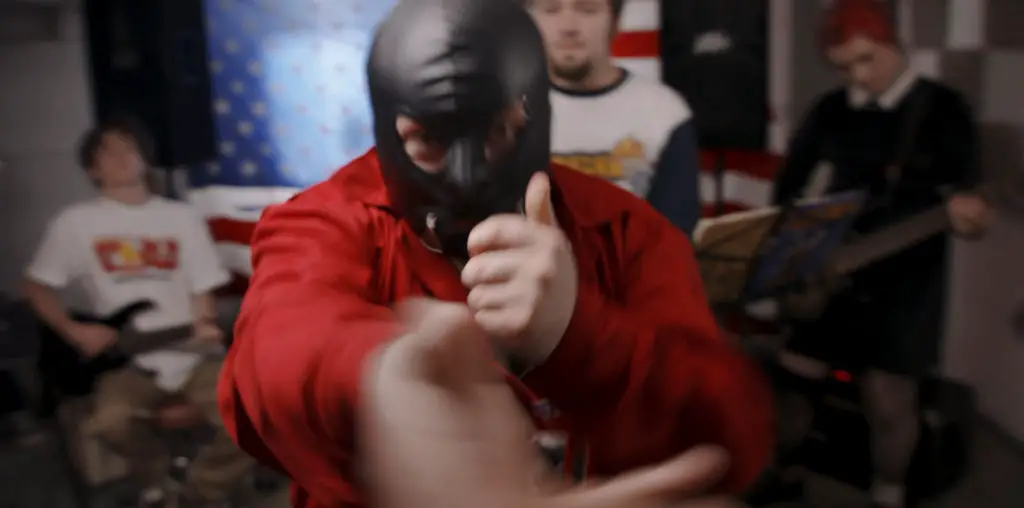
The life of Bob Crane was not without a surplus of drama: a Connecticut DJ who landed in Los Angeles for radio and occasional acting gigs, Crane saw a meteoric rise via the sitcom “Hogan’s Heroes” followed by a career nosedive fueled with an omnivorous sex addiction and culminating in a gruesome and still-unsolved murder. Yet Paul Schrader’s “Auto Focus,” a biopic on Crane’s bizarre life, is so uninvolving that it is impossible to conceive how such a wonderfully sordid subject matter could result in a film as mayonnaise-bland as this.
As depicted in “Auto Focus,” Bob Crane was an affably square family man (wife and three kids in a ranch-style suburban house) who fell into a swinging life during the mid-1960s with the assistance of John Carpenter, a salesman/technician for the nascent video recording industry. (Though Crane may not have been a total innocent: he kept a stash of girlie magazines in his garage, upsetting his proper wife.) Initially Crane’s only interest in the world of free love comes by playing drums at a Hollywood strip club–he never once ogles the strippers who bare all for him. Over time, however, he and Carpenter are entertaining loose women at Carpenter’s bachelor pad. Adding to the fun is Crane’s interest in photography, which he incorporates into the carnal romps by taking Polaroid snapshots and videotaping the hoochy-koo. This playtime wrecks Crane’s marriage, and while a rebound second marriage to a starlet from “Hogan’s Heroes” is initially on steady ground (the new Mrs. Crane claims not to mind the fun on the side), it eventually ruins that union. By the late 1970s, Crane is a worn-out has-been reduced to dinner theater engagements and supposedly unemployable in Hollywood. He abruptly decides to quit his swinging ways and rebuild his dormant career. He informs his buddy Carpenter to hit the road, which Carpenter is not happy to hear. While in Scottsdale, Arizona, in June 1978 for a dinner theater engagement Crane is murdered in his hotel room. “Auto Focus” ends with a beyond-the-grave narration from Crane suggesting that Carpenter was his killer but that he got away because the Scottsdale police were a bunch of dumb hicks who didn’t know how to gather evidence. (Carpenter was actually tried for murder in 1992 but was acquitted–if the film has any proof of his guilt, it is not presented on-screen).
The story line of “Auto Focus” would suggest the ultimate guilty pleasure: watching the bloody downward trajectory of a pop icon into the depths of depravity. Yet “Auto Focus” is so badly focused that even the most hungry scandal-seeker will find few crumbs to nibble on. The key stumbling block here is the hopelessly miscast Greg Kinnear as Crane. While bearing no physical or vocal resemblance to the late star (the badly-bleached hair doesn’t help), Kinnear also lacks the considerable charm which made Crane a star. In his performance, Kinnear’s Crane is so dull that it’s impossible to imagine how he could ever get a foot in the Hollywood door, let alone star for five years on a top-rated TV show and earn Emmy nominations along the way. In fact, the blatantly kitschy set and costume designs (representing the worst of the 60s and 70s) constantly upstage Kinnear. The Bob Crane in “Auto Focus” is such a bore that watching his downfall is a pain: we don’t care enough about the man to see him stumble into ruin, as his wreckage leaves us indifferent and numb.
If Kinnear is no one’s idea of Crane, the film goes one further by recreating “Hogan’s Heroes” with actors who bear no resemblance to the original stars of that series. Michael Rodgers as Richard Dawson is especially a puzzler–the actor recalls Tommy Steele rather than Dawson in his appearance and sing-song British accent. Who cast this movie? Ed Begley Jr. and Michael McKean turn up in bit parts, perhaps to spark the audience’s attention.
As for the sleazy John Carpenter, the film presents Willem Dafoe doing yet another of his creepy-crawly performances as the vile nasty we’re supposed to love to hate. But whether through the inadequacies of the screenplay or the actor’s boredom with the material, Dafoe’s performance is so one-dimensional that he comes across like a caricature of the good-time sleazebag rather than the videographic Mephistopheles who supposedly lured Crane into his sex-addicted hell.
For the record, “Auto Focus” cheats its audience in recreating the post-“Hogan’s Heroes” Crane as pathetic has-been. The film casually forgets that Crane was actually steadily employed doing guest appearances on top rated TV shows during the 1970s and also had his own “Bob Crane Show” during the 1975 TV season. “Auto Focus” presents an alleged incident where a disheveled Crane was obnoxious and scatological during the taping of a dinky program called “Celebrity Chefs”…but it never recreates an appearance on the high-rated “The Dinah Shore Show” where a well-groomed and charming Crane was a welcomed guest who spoke about what became his final theater tour.
For those seeking a bit of T&A play, “Auto Focus” provides a nice surplus of bare-breasted ladies and a few full-frontal nudie shots. There is also a brief montage of breasts with Kinnear’s Crane breathlessly acknowledging the wide variety of nipple shapes before exclaiming “I love tits!” But this fleshy intrusion seems like it came in from another (and more interesting) movie. Perhaps it is a shame that no one thought of digitally restoring and theatrically releasing the sex videos that Crane made with the many women he pleasured…that would have been far more entertaining than anything found in “Auto Focus.”
